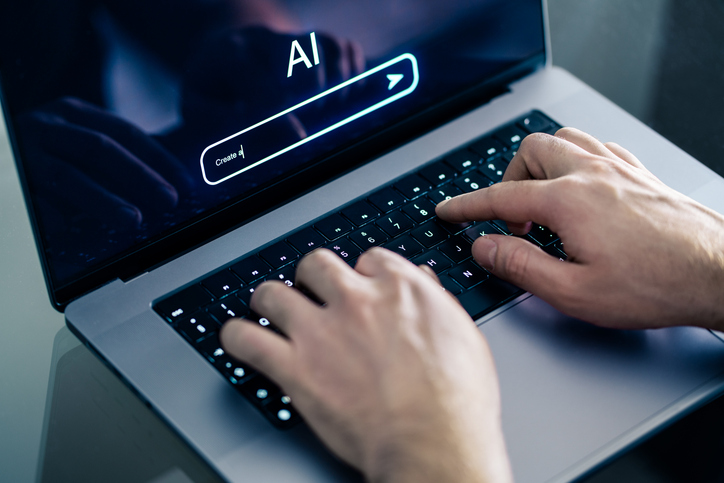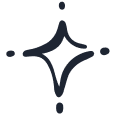
How Building AI Career Frameworks Can Save HR Teams 40+ Hours
October 21, 2025 Written by Rafael Spuldar

Compare Providers
Download our outplacement comparison sheet
Request Pricing
Compare our rates to other providers
Career frameworks are powerful tools for organizations. They give employees clarity about growth opportunities, help managers make better talent decisions, and align development paths with business strategy. But building these frameworks manually can be a time-consuming, complex process that drains resources—often taking weeks or even months to get right.
The good news is that artificial intelligence (AI) is changing the game. Any organization can now create an AI career framework that saves HR dozens of hours through automation, advanced analytics, and predictive modeling, delivering more accurate, personalized, and dynamic results.
In this article, we’ll explore how AI is revolutionizing career frameworks, the challenges it solves, and the benefits organizations can expect. By the end, you’ll understand why adopting AI in this space is the competitive edge your organization might need.
Why Career Frameworks Matter
Rolling out a career framework pays off for employees and businesses alike. A clear, regularly communicated progression model supports individual growth and career goals while helping leaders connect talent strategies to concrete business outcomes and evolving priorities. You’ll retain critical talent and position the organization for sustainable, long-term growth.
Here’s how effective career frameworks deliver measurable impact:
For Companies
- Higher retention: When people see realistic pathways and future opportunities, they’re more likely to stay, keeping hard-won knowledge inside the company.
- Stronger internal pipeline: Defined progressions limit reliance on external hiring by helping managers surface, build, and promote talent from within.
- Sharper workforce planning: A structured model enables leaders to forecast capability needs and prepare people through focused learning, coaching, and stretch assignments.
- Cross-team consistency: Clear advancement criteria promote fairness, reduce bias, and ensure that all teams follow the same expectations for movement and promotion.
- Better employer brand: A reputation for advancing careers attracts stronger applicants, improves offer acceptance rates, and positions your company as a desired employer.
For Individuals
- Greater motivation: People engage more deeply when they can see a credible future and take practical steps to advance their careers.
- Clarity and direction: Transparent milestones and criteria show what’s required for progression and where a role can lead next.
- Personalized development: Employees can pursue routes aligned with their strengths and interests, rather than just traditional promotions or management tracks.
- Increased trust: Open structures reduce ambiguity and favoritism, strengthening confidence in leaders and the perceived fairness of internal processes.
- Stronger engagement: Visible career support builds loyalty and satisfaction, lowers turnover, and cultivates a committed, long-term workforce.
Why Traditional Career Frameworks Are So Time-Consuming
As valuable as it is, building a career framework is a complex job. It requires mapping roles and skills, setting performance benchmarks, and keeping everything updated. An HR team can easily spend 40 hours—one full week’s worth of work—assembling one framework.
It also depends on the methods used to build the career framework: The more you rely on manual processes, the longer it will take and the harder you will work.
Let’s dive deeper into the reasons why traditional career framework building is so resource-intensive:
Data Overload
HR must gather data on job descriptions, skills, performance metrics, industry benchmarks, and employee aspirations. This information is often scattered across spreadsheets, HRIS systems, and survey results, requiring lots of back-and-forth between platforms to get things done.
Complexity of Skills Mapping
Jobs are no longer static, and skills evolve quickly. One role may require a hybrid of technical, leadership, and soft skills, and mapping these accurately can be a labor-intensive task. What’s more, the information is often outdated by the time it’s made available for the teams.
Lack of Personalization
Manual career frameworks tend to be generic. It’s practically impossible for those traditional structures to account for individual employee strengths, interests, or career aspirations. So they end up losing value for either the employees or the organization.
Maintenance Overhead
Career frameworks need continuous updates as new roles emerge, technologies shift, and business priorities change. This creates ongoing work for HR, not just a one-time project. Not to mention that static frameworks typically live in spreadsheets, hindering employee ownership and visibility.
Ready to start building your organization’s framework? Click below to connect with Careerminds experts and learn about how our Career Framework services can elevate your entire workforce.
What Is an AI Career Framework?
An AI career framework uses artificial intelligence to optimize the creation and management of career frameworks.
Instead of relying solely on manual input, it leverages:
- Natural language processing (NLP) to analyze job descriptions, skills, and performance data.
- Machine-learning algorithms to identify patterns, predict role evolution, and suggest career pathways.
- Real-time market data to ensure that frameworks align with industry trends and in-demand skills.
- Personalization engines to match employees with tailored development paths based on their strengths and aspirations.
In other words, AI turns a static, one-time project into a dynamic, living framework that evolves with your people and your business.
STATISTICAL INSIGHT:
Deloitte’s 2025 Global Human Capital Trends report states that 72% of surveyed workers and 73% of executives believe that organizations should do more now to provide existing workers with more opportunities to gain experience.
This data highlights the urgency for organizations to adopt smarter, scalable tools like AI to create career frameworks that unlock growth opportunities.
How AI Saves You 40+ Hours in Building Career Frameworks
When you leverage an AI-powered career framework tool, your HR team can streamline a process that might have consumed a full week of labor into a few days or even hours.
Let’s break down the specific areas where digital transformation drastically reduces the time and effort involved:
Automating Data Collection and Analysis
Instead of manually compiling spreadsheets, AI tools efficiently pull from multiple sources—internal HR data, performance reviews, learning platforms, and external labor market insights.
Intelligent Skills Mapping
AI identifies emerging skills, clusters them by role, and creates accurate skills taxonomies. This eliminates the guesswork that HR teams face when trying to map roles manually.
Dynamic Pathway Recommendations
AI can map roles and suggest personalized career pathways for employees. The tool will analyze historical promotions, skills overlaps, and role transitions to build realistic pathways that are both aspirational and achievable for staff.
Automated Updates
AI can automatically refresh career frameworks according to new roles and skills that emerge. Forget HR having to revisit frameworks every six months to keep them relevant. Scheduled reviews become automated alerts, for example, triggering updates as thresholds or market signals shift in real time.
Visualization Tools
AI-powered platforms often include dashboards and career path visualizations, cutting down the time spent on formatting and presenting frameworks. Think, for instance, of interactive maps to clarify prerequisites, skill gaps, and steps for employees and managers at a glance.
Additional Benefits of AI Career Frameworks
Beyond time savings, relying on AI solutions brings significant advantages for employees, managers, and organizations:
- Personalization at scale: Instead of generic ladders, employees now see career paths tailored to their unique skills, aspirations, and potential.
- Greater engagement and retention: The easier it is to create personalized career paths, the more employees will feel valued, boosting engagement and reducing turnover.
- Better workforce planning: AI identifies skill gaps early, helping HR align workforce development with long-term business strategy.
- Faster adaptation to change: Frameworks update automatically as industries evolve, ensuring that employees are constantly developing the skills most relevant to the future.
- Equity and transparency: AI can help reduce bias by applying consistent rules across the workforce, ensuring that career growth opportunities are accessible to all.
Practical Steps to Implement an AI Career Framework
If you’re still not used to AI solutions in your HR processes, don’t be scared. Building an AI career framework is about finding the right tools and partners to get things started.
Let’s review some best practices for your organization to establish its own AI-powered career framework:
Step 1: Define Your Objectives
Think of what you want to achieve with your career framework. Are you looking into improving retention? Is succession planning your priority? Or internal mobility? Clarify your goals first.
Step 2: Audit Your Data
Gather all current information available about current roles, skills, and employee development. Even if it’s fragmented, this data will feed into your AI system and help build your framework.
Step 3: Choose the Right AI Tool
Look for platforms designed specifically for career frameworks or talent development. Key features to prioritize include:
- Skills taxonomies and mapping
- Personalized pathway recommendations
- Integration with HRIS and LMS systems
- Analytics and visualization tools
Step 4: Pilot with a Subset
Start small—roll out your new AI career framework in one department or function before iterating and scaling to the rest of your organization.
Step 5: Train Managers and Employees
Managers should be trained on how to use AI-powered insights in career conversations, while employees should feel empowered to explore pathways on their own.
Step 6: Monitor and Refine
AI gets smarter with feedback. Collect insights, review adoption, and adjust your AI career framework system over time.
AI Career Frameworks: Key Takeaways
As workplaces evolve, so must the tools we use to manage talent. Career frameworks need to be living systems that adapt as roles, skills, and employee expectations change.
AI enables exactly that. It can save HR teams 40+ hours of manual work, deliver personalized and dynamic career paths, and ensure that organizations are ready for the future of work. Adopting an AI career framework is key for organizations that want to stay competitive.
Ready to transform how your HR team approaches career development and job architecture? Click below to contact our experts today and learn how Careerminds can help in your AI-powered journey.
In need of outplacement assistance?
At Careerminds, we care about people first. That’s why we offer personalized talent management solutions for every level at lower costs, globally.





